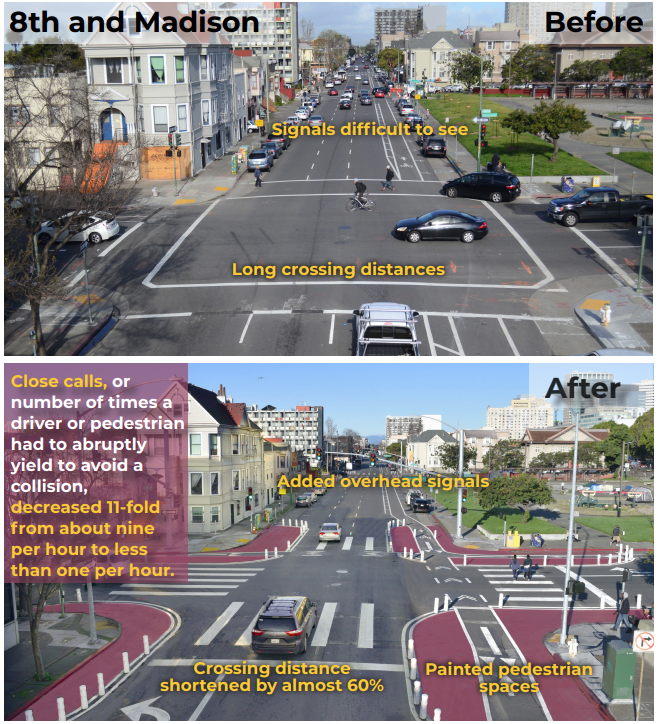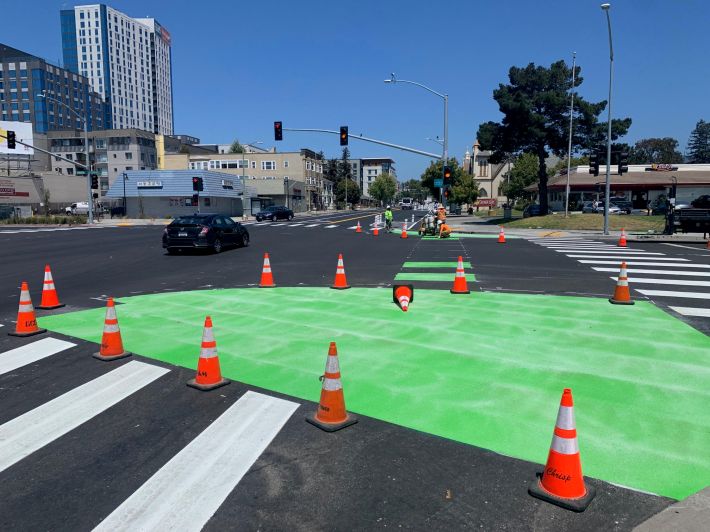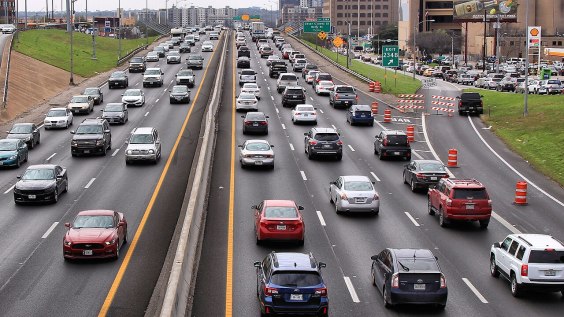Note: GJEL Accident Attorneys regularly sponsors coverage on Streetsblog San Francisco and Streetsblog California. Unless noted in the story, GJEL Accident Attorneys is not consulted for the content or editorial direction of the sponsored content.
Drivers yielded to pedestrians 23 percent and to cyclists by 87 percent more, according to a newly published study of the protected intersections around the Lake Merritt BART station. The intersections, built with a Safe Routes to Transit grant a little over a year ago, were a response to the high injury rate in the historic area.
"Chinatown is a vibrant community where many seniors and children rely on walking to get around, but it’s also home to some of the highest concentrations of high injury corridors," wrote officials for the city of Oakland in a release. These corridors represent "...just six percent of Oakland streets where over 60 percent of severe and fatal traffic crashes occur."
Drivers yielding to pedestrians increased by 23%; from 63% to 86%. With the new protected bike intersections, 87% of drivers now yield to bicyclists. /5 pic.twitter.com/MXNWtiHceT
— OakDOT (@OakDOT) August 1, 2020
As Streetsblog readers will recall, the five protected intersections were installed around Lake Merritt BART, using paint and K71 bollards. There are no special bike signals. As the photos below show, the city took standard American-style intersections and extended the corners out to shorten pedestrian crossing distances and to force cars to slow as they turn. There's also a cut-through path for cyclists to increases the spacing and visibility between cyclists and turning motorists.

As noted in the above illustration, there was also an 11-fold decrease in close calls. "We are pleased to see the safety results from OakDOT intersections around Lake Merritt BART," Bike East Bay's Dave Campbell told Streetsblog. He noted that his organization and TransForm worked on helping the city get the grant to build them. "Also happy to see a project we helped coordinate get built and be successful."
It's worth noting that Bay Area cities (with the exception of San Jose and Fremont) typically build protected bike lane projects without protected intersections or, in the Lake Merritt case, protected intersections without protected bike lanes. The two are supposed to work together as a system to make cycling safe and comfortable for riders of all ages and abilities.
However, Campbell explained that OakDOT is now updating street designs to incorporate both.

For example, the Temescal Telegraph project, seen above currently under construction, was originally slated to have mixing zones with protected bike lanes--but is now getting a protected intersection at MacArthur. "They're borrowing from lessons learned at the protected intersection at Lake Merritt, using paint and bollards," said Campbell. "They're improving on the designs."
Oakland is also designing upgrades for the Lake Merritt protected intersections that will use concrete instead of plastic and paint. The plan is to add parking protected bike lanes too. It's unclear when those will be in place. Streetsblog has an inquiry in to OakDOT and will update this post.






